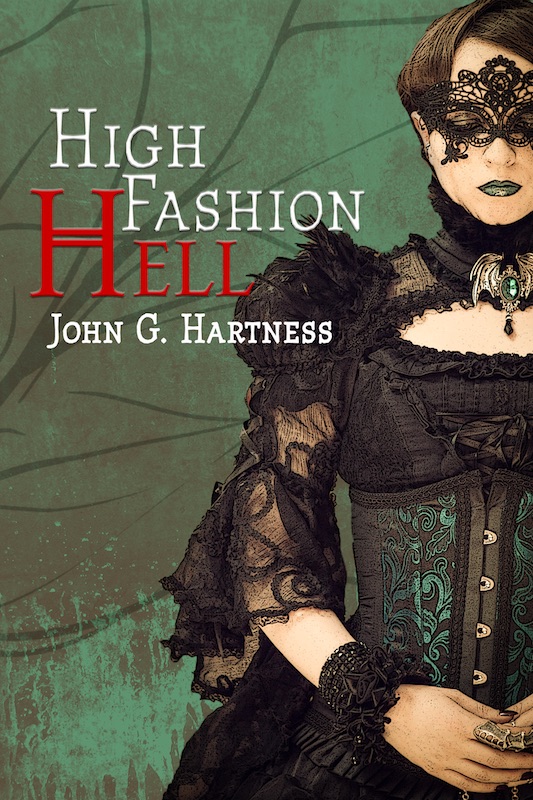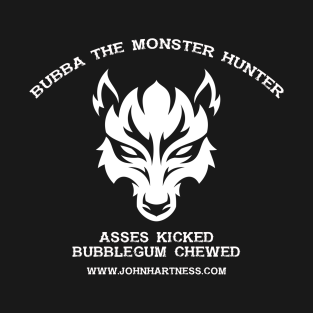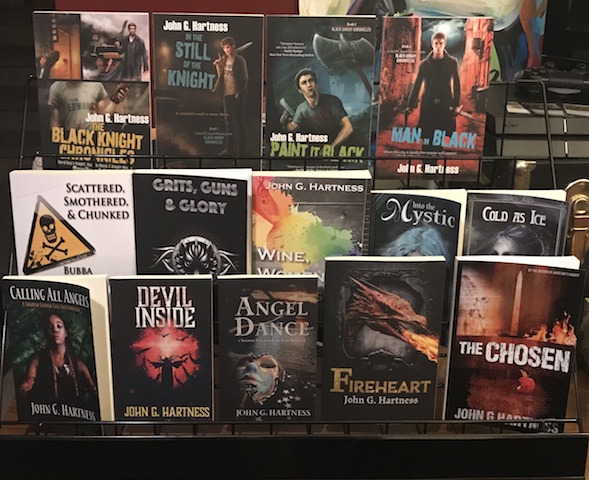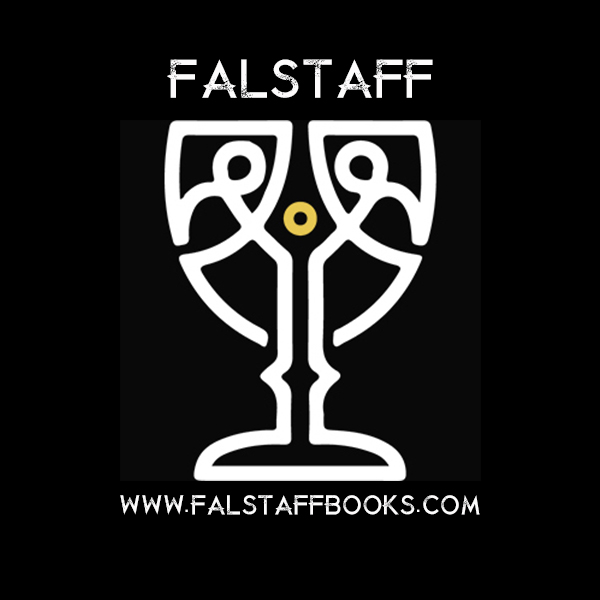by john | Feb 6, 2015 | Business of publishing, Literate Liquors
This week on Literate Liquors I talk about SFWA’s new membership rules, and a couple of awesome Kickstarters that I’m backing.
Here’s the link to Queers destroy Science Fiction –
Here’s the link for Worlds of Wonder –
Here’s the whole podcast –
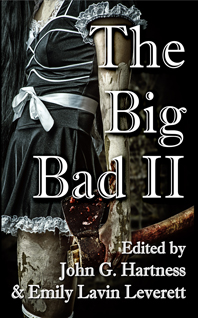
by john | Feb 6, 2015 | Business of publishing, Vampires, Writing
I use Selah Janel’s story in The Big Bad volume 1 as both a cautionary tale on everything NOT to do when submitting to an anthology, as well as a cautionary tale on the benefits of being friends with people in the industry, most notably editors or people who might one day become editors. When Selah and I became friends, I had no intentions of editing anything, much less a series of horror anthologies. But I did, and when it came time to start reading for The Big Bad, I got an email from Selah saying (basically) “I have a story, but I’m running a little late, and a little long. Can I have a couple weeks?” I said “Sure, send it along when it’s ready.” A month later I get another email with a story attached saying (basically) “Here is it, sorry it’s so late, hope you still like me, hope you can use it.”
It was almost exactly 1,000 words OVER the max allowed word count for the anthology. I almost round-filed it immediately, but she was my friend, and that guaranteed her at least one paragraph’s worth of leniency. You can see why I don’t have many friends – it only got her a paragraph. I read it, then waited patiently as Emily (my co-editor and partner in crime on these anthologies) read it. She emailed me and we agreed that the story had done almost every single thing wrong to get included. It was late, it was too long, it was another friggin’ vampire story. We wanted any excuse to hate it.
Sidebar – when you’re accepted into an anthology, after a few acceptances, you stop asking “Really?” and start asking “Where will you put my story?” There are three pieces of prime real estate in an anthology – the first story, which gets read by the most casual readers, the center story, which gets read by a lot of passersby who crack the book open randomly and pick a page, and the final story, which is the closer and wants to be a big finish.
Selah’s story was the closer for Big Bad Vol. 1. It was, quite frankly, one of the best damn vampire stories I’ve ever read. I looked for any excuse not to love it, and she didn’t give me one. I’ve told lots of people at lots of panels at lots of conventions that you can either follow all the rules or be so goddamn amazing that they don’t apply to you. Seals Janel is an amazing writer and I’d read her grocery list. Here’s her story behind the story for Big Bad 2. And no, she didn’t get the closer spot in BB2, we dropped her in the second spot from the beginning, because editors are evil. You see, if you download the free sample from Amazon for the ebook, you’ll get cut off before Selah’s story ends. And that’s going to guarantee a high conversion of samples to sales. 🙂
Plain and simple, I love vampires. There’s a lot of versatility there, a lot of things to explore. One of my favorite vampire movies is The Lost Boys, and admittedly my story in the first Big Bad, “Real Wild Childe” came out of one of the few beefs I have with the original movie: the horrifically lame female characters in cliché roles. While I admire Jami Gertz and Diane Wiest and they’re great in the film, Star and Lucy’s functions are to just kind of be there as love interest and Mom. It’s a shame, because a lot could have been done with those archetypes. The sequels never really bothered to correct the female role issue, either, so it became a mission to write a vampire story where the girls could keep up with the boys and then some. Admittedly, “Real Wild Childe” was also my chance to warp the vampire romance genre beyond recognition, but a lot of it was the chance to have fun with some renegade vampire characters while beefing up the female roles. In a lot of ways, I did a whole reversal with putting Rave at the mercy of all the women in his life, vampire and human.
When the second volume was announced, I was sure I was going to sequel that story. I was excited to keep exploring Rave and Sin’s twisted relationship, as well as Addington’s vampire problem as a whole. Unfortunately, it became evident very quickly that it would be way too much for an anthology story, and I already had the habit of antagonizing the great Hartness with my inflated word counts. I didn’t want to leave that world behind, though, so it occurred to me to go in the other direction and prequel it.
I mention in the original story that Rave and Asha’s sire is their mother, and she’s not a particularly motherly type. Amanda was the perfect character to explore not only the feminine role of mother, but also to mash that up against what a vampire was, and why a typical 1950’s housewife would even want to become one. My research led me on a winding road, and I found the perfect excuse for an underground, mother-centric vampire cult: fear of communism and all-out nuclear war. What if a protective instinct was so great, that you’d do anything to ensure your family line and the wellbeing of your kids, even if it meant killing and drinking blood?
That was a great start at developing the cult of The Family and the character of The Patriarch, but it still didn’t quite mesh up with the Amanda in the original story. What kind of a person would turn into a manipulative, jealous vampire who wanted to clamp down on her kids and rule over them throughout eternity? After all, most parents are more than willing to kick the birds out of the nest at some point, and Amanda had never come across as a loving maternal figure.
As I began writing, I slowly discovered a character who was burnt out, frustrated, and felt overlooked. Her insecurities about her own life fed her jealousy that landed on everyone: her husband’s employees, her friends and fellow cult members, even her own children. She was desperate to be noticed, true, but also desperate for something else. It all made me wonder, what would happen if a mother didn’t necessarily have children because of a great love for them, but because they complemented her idea of what life should be like? What if she looked upon them as accessories that she owned, accessories that weren’t supposed to ever get out of line or go against her thinking? What if that craving for power gave her confidence to try out her powers in increasingly controlling ways, all under the guise of it being in everyone’s best interest? And what would she do if her precious family/accessories dared to try to go against her?
And what would happen if she found out that they may possess the same sort of darkness she did?
Exploring her manipulative nature in “A Family Affair” fascinated me, and I slowly grew to view Amanda as less of a madwoman and more of a complex character. If the story in the first volume was me riffing off my love for the bad boy type vampire in The Lost Boys and an attempt to play with the idea of a human love interest, Amanda became my anti-Lucy in The Big Bad 2. She still loves her children, but for the wrong reasons, and she’s desperate to retain something of herself as she watches the world and her family start to plot on without her. Her evil is more internal, but she still sheds a considerable amount of blood and has no guilt doing it. She freely plays with her family’s minds, and forces them down a dark road that will have significant repercussions decades later. Amanda’s an intense character who will get her way at any cost. She’s dangerous to most of those around her. She’s also a lot of fun to write.
It was also interesting to explore Rave and Asha as humans, to really tinker with who they had been before they became runaway delinquents. Although they’re at the mercy of their mother’s actions, there are also hints that they weren’t innocent from the get go, that maybe they’re more like their mother than they’d ever care to admit. Character relationships and dynamics intrigue me, so it was interesting to put all of that against the workings of a vampire cult and the changing vibe of the 1950’s in general. It’s an odd combination, to be sure, but it’s a fun one, and one that I hope is worth reading.
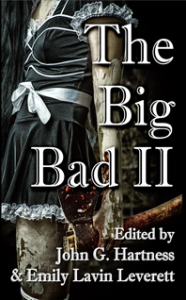
by john | Feb 4, 2015 | Business of publishing, Writing
Not really. But it kinda has felt like that from the outside. Let’s get my view of the facts out of the way first before I go into my conflicted feelings about this whole SFWA v. self-published authors thing.
Starting March 1, self-published and small press authors who meet a certain earning threshold (I believe it’s $3,000 over a twelve-month period for one novel-length work, or some amount of cents per word equaling some dollar amount for short stories – I didn’t really pay attention to the short story criteria) will be eligible to join Science Fiction and Fantasy Writers of America, the professional organization for people who do what I do.
Full disclosure, the Horror Writers Association is also the professional organization for people who do what I do, because nobody can really decide if I write horror or fantasy. But I don’t write romance, which is why I don’t need to worry about joining RWA, which I might anyway, because RWA is a solid organization with a bunch of shrewd businesspeople involved. But I digress.
This is kinda a huge deal. It feels like a much bigger deal than last September, when HWA changed their rules to a very similar structure to allow self-pub and small press authors into the fold. I jumped onto that opportunity, but I’m hesitant about joining SFWA, and I figured I’d use this little corner of the inter webs to explore why as much for me as for anyone.
Let’s start at the beginning, back in 2010 when I published The Chosen (now available on audiobook on iTunes, Audible or Amazon). I didn’t have any real idea what I was doing, I was just trying to get my words out there any way I could. So I researched SFWA, because I was writing fantasy, so I wanted to be able to draw on the knowledge of other people writing fantasy. I read the “Join SFWA” page and quickly realized that there was no method for me to do just that. Self-published authors were not allowed a seat at the table.
That stung. I was new to writing, and new to publishing (still relatively new to both, this being year 5 of my journey), and to be told that I wasn’t good enough to sit at the cool kids’ table (again) because I was following a different path to my readers didn’t feel good. And it has continued to not feel good for five years, through friendships with people on SFWA’s board, through conversations about how stupid the rule is with SFWA members and other excluded parties, and I’ll own my pettiness – this as created in me a sense of bitterness about SFWA.
See, the thing is I’m a joiner. I feel like being a part of the professional organization for your field is just what you do. I got a job designing theatrical lighting systems, I joined IES, the Illuminating Engineering Society. I started working with high schools on their lighting systems, I joined the North Carolina Theatre Conference, then the Southeastern Theatre Conference. I’ve sat on the board of directors of many regional professional societies because I’ve always felt like networking, camaraderie and having the back of your fellows in the field is what you do.
But now I was in a place where I was told that I wasn’t a professional enough writer to join the professional organization for writers in my genre. All because of the way I was publishing my work. That didn’t sit well with me. It certainly didn’t sit well with me once I started earning money as a writer, because I very quickly eclipsed the earnings requirements for membership, and then the ONLY thing keeping me out was a label. And that just felt wrong. I wasn’t excluded at conventions from drinking with writers because I didn’t have a SFWA card. I wasn’t excluded from guest status at a con because I wasn’t a SFWA member. I wasn’t excluded from anything, except membership and that label of “professional.”
So I became bitter. And fairly vocal about it. I may have mentioned more than once that $250 worth of short story sales to magazines could get you into SFWA, but ten grand worth of short story sales to readers wouldn’t get you in.
And I understand that organizational change often comes slowly. God knows I’ve spent enough years in non-profit management to know that. I’ve sat through more board retreats and long-range planning sessions than I care to count, so I know that it takes time to affect change. I also know it doesn’t take five years. And self-publishing had already shifted from being a fringe vanity press swindle to a viable career option before I started with this mess in 2010, so the whole “organizations change slowly” thing lost weight with me about two years ago.
So what do I do now? On the one hand, I want to stand outside the window holding up my sign saying “Screw you, I don’t need you now!” Because I don’t know that I do. I network pretty well on my own. I have con appearances, book deals, friends to blurb my stuff and pretty much everything I need to continue making my career.
On the other hand, I want to be part of the professional organization for my chosen career path. And I do, like a lot of authors, want the affirmation of being labeled a professional by my peers. Because a lot of times I hang with my friends and still feel like a fraud, like no matter what I’ve done, it’s not enough. That’s my issue, not theirs, and certainly no one has ever made me feel that way. But it’s there.
Will a SFWA card make that feeling go away? Do they even give out membership cards? Does HWA? If so, did I lose mine already? I don’t know the answers to any of those questions.
And why did I get my panties in a bunch about SFWA and not HWA? Why did I tweet out congratulatory messages to HWA when they finally pried their collective head out of their collective ass last year and let self-pub and small press authors in? Probably because I didn’t know I wasn’t eligible for HWA membership until I was already eligible. Because I thought I was a fantasy writer, not a horror writer, so I had been focusing on SFWA until somebody nominated me for a horror award, then I started thinking of myself as a horror and fantasy writer.
So I don’t know. Are there benefits to joining SFWA? Certainly. Are any of them useful to me? Probably. Should I just get my head out of my ass and fill out an application? Probably. Would I feel better about this whole issue if any of my emails to a SFWA president a few years ago asking about this issue had ever been answered? Yeah.
What do I want out of this mess? At this point, I think I want to be asked to join. I would like someone affiliated with SFWA to say “Hey, I think you should join SFWA. We’d like to have you, and think it could be good for you and for the organization.”
I don’t expect that to happen, but to be frank, even if I heard about SFWA reaching out to other major self-pub and small press authors to open up membership with open arms instead of begrudgingly, it would probably get the bug out of my butt.
So there are my thoughts on the SFWA self-pub thing, not that anybody asked me. I don’t know if I’ll join. Maybe. At this point it’s not even about the benefits of membership, it’s about whether or not the organization really wants me.
So that’s plenty of word-puking for the morning. I’mma go get a Pop-Tart and get some shit done. Y’all do the same. But stay away from my Pop-Tarts.

by john | Feb 2, 2015 | Uncategorized
You might have heard about this little anthology I’ve got coming out that I co-created and co-edited with Emily Lavin Leverett, call The Big Bad II. All month I’ll be hosting guest blog posts from authors in the anthology talking about the Evolution of Evil – how they came up with their story for The Big Bad. This is Nicole’s take.
I’m an 80s brat. Born in ’74 (still younger than me! – JH), but reared on the Eagles, The Police, Michael Jackson, and Prince. My coming of age years sprouted firm and fully underneath the bestseller might of V.C. Andrews and Stephen King at the height of his popularity and horror movies. My parents sought out horror via the revolutionary VHS (sometimes we managed to snag a BETA version in error from the video store. My father would be furious), and watch the carnage unfold on our home television set until the wee hours of the night. Then, my folks and I would load up into our car and go to the Waffle House® for breakfast.
Film after film failed to frighten me. You see, I grew up in a public housing project. The gritty horror of inner city life rendered Freddy’s one liners and Jason’s “campy” antics to farce and funny. In a word, it was overkill. I saw real people die from drug overdoses, gunshot, and stabbings. Blood stained sidewalks, police brutality, and common fist-fights in my every day diet made Hollywood’s scary settings more cartoonish than horrific.
My story, “Sweet Tooth,” in The Big Bad, Volume Two, is based on what did terrorize me as an 80s teenager. The candy lady. Her apartment was in our neighborhood, and like most people in the projects, she hustled to make her government-subsidized wages stretch. She sold candy, pop, gum (no, it’s not the same as candy), and chips from her kitchen.
As a youth, I feared her, like my protagonist, Bryce Howerton, does in my story. Her place smelled strange-weird, a mixture of ancient dirt and leftover death. My stomach hurts even now as I think about that odor and how it made my own sweet tooth ache from disgust. From that single horror—a filthy apartment that sold food products to kids—also coupled with the news coverage of razor blades in apples at Halloween and sweets had become suspect for me ever since.
To this day, I still prefer salty snacks to anything “sweet.”
My second fear as a teenager grew from the abduction of young black children in the Atlanta area. The Atlanta Child Murders turned my momma into a protective force. Her fear fed mine and together it grew to incredible size. The community’s outrage over the seemingly lack of interest in black lives, even then, seemed horrific (#blacklivesmatter).
Twisted and intertwined, these two fears became the crux of “Sweet Tooth,” a short story of an inner city teen and his very real fear of the hood’s candy lady. Of course, those facts mixed with fiction, and what Bryce learns about the discarded bodies, the candy lady, and himself if what great storytelling is all about.
So, check out “Sweet Tooth,” and other tales of villainy in The Big Bad, Volume Two, from Dark Oak Press and from the editing genius of John Hartness and Emily Leverett.
As for me, you can follow me on Twitter @nicolegkurtz, find me on Facebook (http://www.facebook.com/nlkurtz), and groove with me on Google+ (mochamemoirspress). You can find my other works of horror at Other Worlds Pulp, my website, http://www.nicolegivenskurtz.com.



